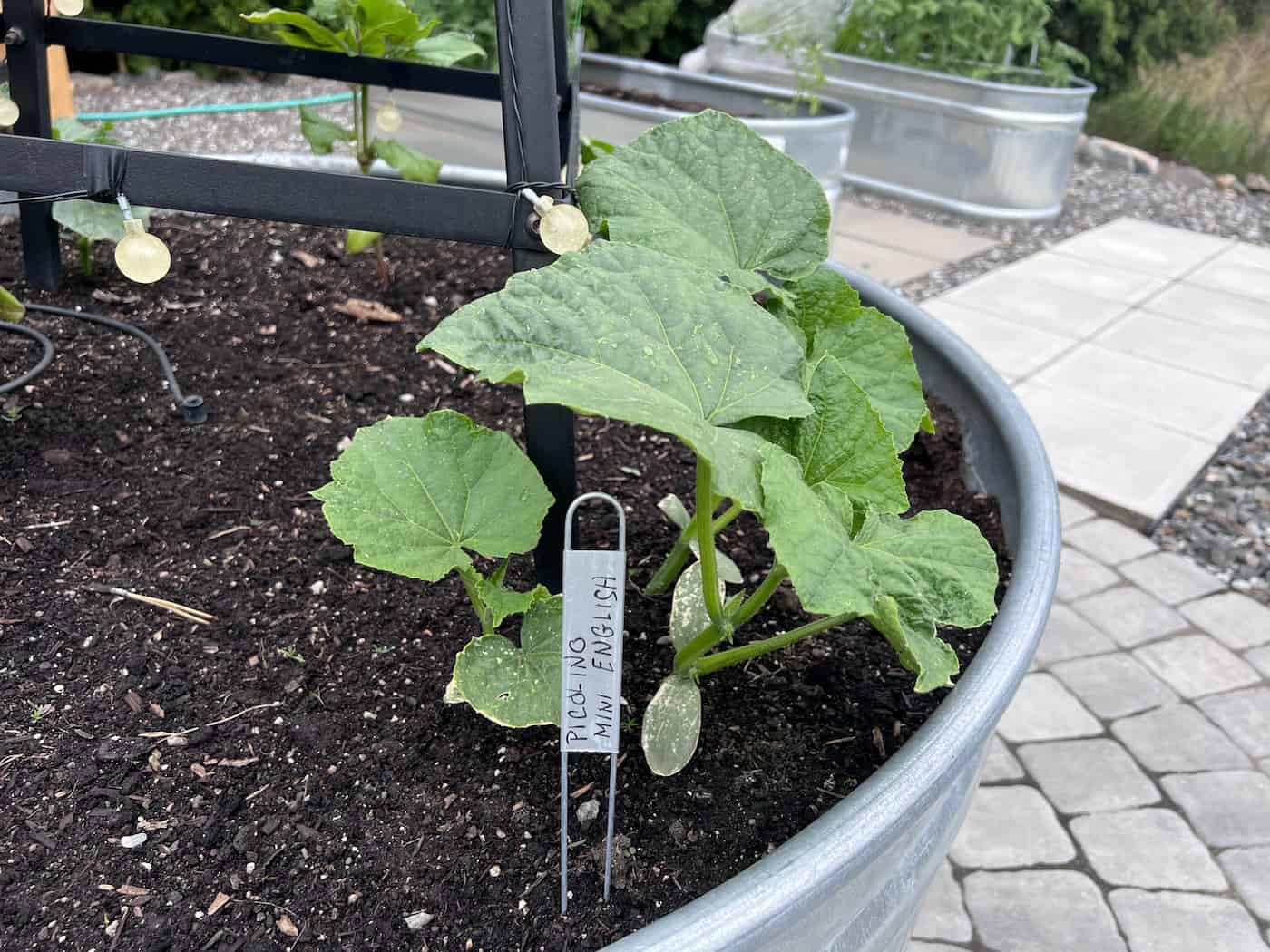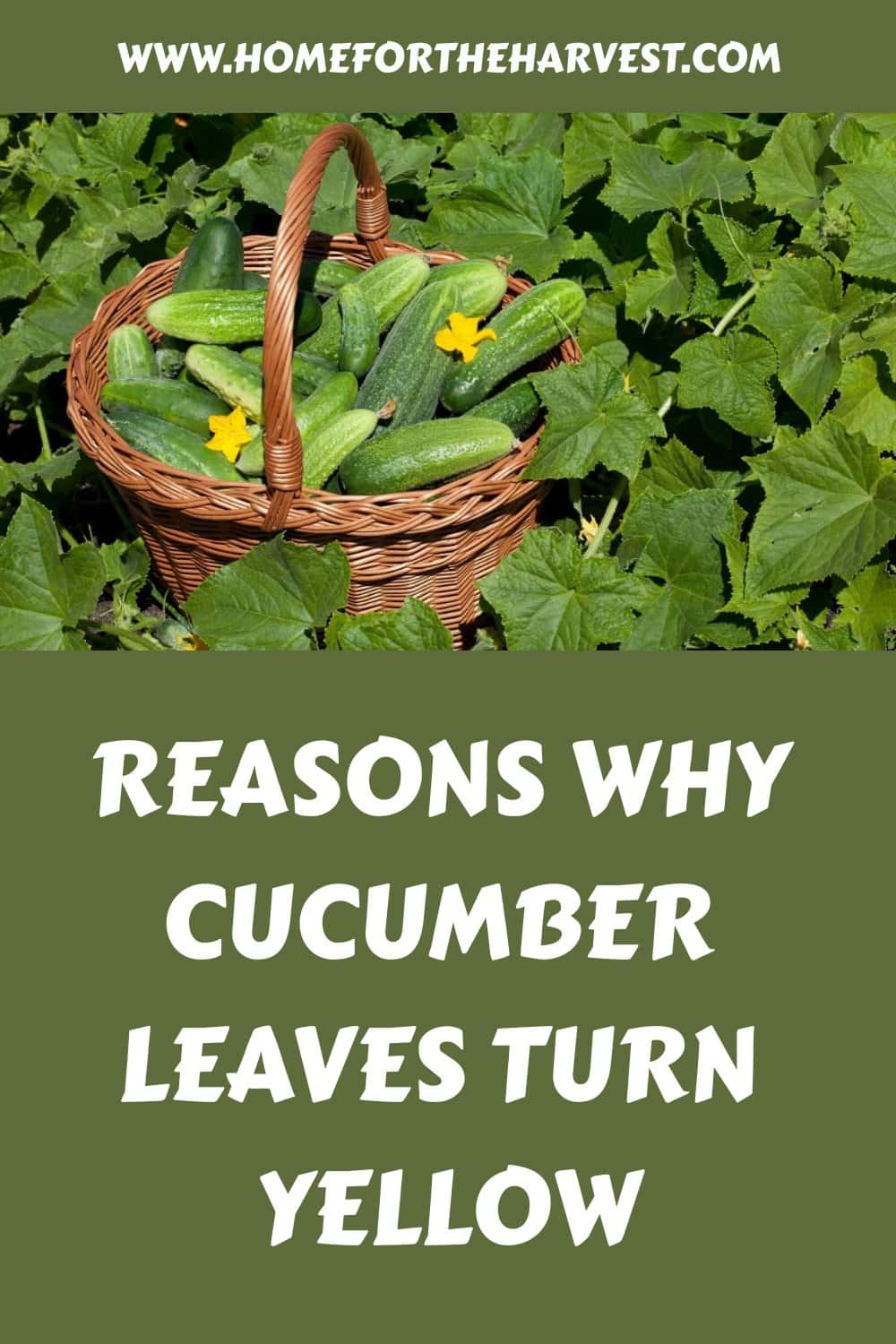Gardening can become frustrating when your plants aren’t behaving as you expect. Here are five common reasons for cucumber leaves turning yellow:
- Lack of water or way too much watering
- Nutrient deficiency (especially nitrogen)
- Pests affecting your plants
- Lack of sunlight
- Plant diseases
To find out which ailment (or ailments) is affecting your plant, start by observing the soil, the vine, and the fronts and backs of the leaves.
Causes of your cucumber leaves turning yellow
Yellowing of cucumber plant leaves can be attributed to a variety of factors, including both environmental conditions and diseases. Here are some common reasons for yellowing leaves on cucumber plants:
- Watering issues: Over-watering can cause root rot, while under-watering can cause dehydration. Both scenarios can result in yellowing leaves.
- Nutrient deficiency: A lack of essential nutrients, especially nitrogen, potassium, magnesium, and iron, can lead to yellowing leaves.
- Pests: Certain pests, such as aphids, whiteflies, spider mites, and cucumber beetles, can cause damage that leads to yellowing. They might also introduce viruses to the plant.
- Plant diseases:
- Bacterial wilt: Carried by the cucumber beetle, this disease causes rapid wilting and yellowing of the plant.
- Fusarium wilt: A soil-borne fungus that results in yellowing and wilting of older leaves first.
- Mosaic viruses: Cucumber Mosaic Virus (CMV) and Watermelon Mosaic Virus (WMV) can cause mottled yellow-green leaves.
- Poor soil drainage: Cucumbers prefer well-draining soil. Poor drainage can lead to root rot, which in turn can cause yellowing leaves.
- Temperature stress: Cucumbers are sensitive to both extreme heat and cold. Temperatures outside the optimal range can lead to stress and yellowing leaves.
- Inadequate sunlight: Cucumbers require full sun. If they’re shaded for prolonged periods, it can lead to yellowing of the leaves.
- Soil pH imbalance: Cucumbers prefer slightly acidic to neutral soil (pH 6.0 to 7.5). An imbalance can hinder nutrient absorption, leading to yellowing leaves.
- Compacted soil: This restricts root growth, affecting water and nutrient uptake.
- Over-fertilization: While cucumbers need nutrients, an excess of certain nutrients, especially nitrogen, can burn the plant and turn leaves yellow.
- Age: It’s natural for older, lower leaves to yellow and die off as the plant matures.
When identifying the exact cause of yellowing leaves, it’s essential to carefully observe the plant and its environment. Checking the soil moisture, looking for signs of pests or diseases, and considering recent changes in care or conditions can provide clues. Once the cause is identified, appropriate corrective actions can be taken to restore the health of the cucumber plant.
Addressing yellowing leaves on cucumbers
If you’re unsure of the exact reason for cucumber plant leaves turning yellow, a systematic approach can help you address potential issues. Here’s what you can do:
- Check the Soil Moisture: Feel the soil several inches deep. If it’s very wet, you might be over-watering. If it’s dry, you might be under-watering. Adjust your watering regimen accordingly.
- Examine the Plant for Pests: Look under leaves, along stems, and check the soil for signs of pests. If you spot any, consider organic or chemical treatments suitable for the specific pest.
- Review Fertilization: If you’ve recently fertilized, it might be a nutrient burn. If it’s been a while, the plant may benefit from a balanced fertilizer. Also, consider getting a soil test to identify any nutrient imbalances.
- Assess Sunlight: Ensure the plant receives 6-8 hours of direct sunlight daily. If shaded, consider relocating the plant or removing obstructions.
- Improve Soil Drainage: If the soil retains too much water, mix in some organic matter or sand to improve drainage. Ensure pots have drainage holes.
- Mulch: A layer of organic mulch can help retain soil moisture, prevent weeds, and regulate soil temperature. Just ensure it doesn’t touch the plant’s stems.
- Maintain Proper Spacing: Ensure cucumber plants aren’t overcrowded, which can restrict airflow and encourage fungal diseases. Thin out plants if necessary.
- Inspect for Diseases: Look for other symptoms like spots, wilting, or unusual growth patterns. If a disease is suspected, remove and discard affected parts and consider applying a suitable fungicide.
- Adjust Temperature: Protect cucumber plants from extreme temperatures using shade cloth for heat and row covers for cold snaps.
- Rotate Crops: If you’ve grown cucumbers or other related plants (like melons or squashes) in the same spot for several years, consider rotating crops to prevent soil-borne diseases.
- Aerate Compacted Soil: Gently loosen the soil around your plant using a hand fork to improve oxygen availability to the roots.
- Monitor and Adjust Soil pH: Use a soil pH test kit. If the pH is off, consider amending the soil with lime (to raise pH) or sulfur (to lower pH).
When addressing an unidentified problem, it’s essential to make changes gradually and monitor the plant’s response. Rapid alterations in care or conditions can stress the plant further. Always start with the basics like water, light, and pests, and then delve into more specific potential issues.







